Chad DeBolt is the personality behind and founder of Surchability. He’s been heavily involved with online marketing, specifically SEO, for 16 years.
We were brought in by a private equity firm (we’ve previously worked with) to help a new oral surgery practice that was a new addition to a growing network of oral surgeons nationwide.
Oral surgery is clearly an extremely competitive niche.
Luckily, we have worked in competitive niches for the past 16 years. That’s where we thrive.
Our original idea was to deploy our Join or Die Method, which leverages the power of multi-location businesses under one website.
But unfortunately we were told they didn’t intend on putting all practices under one website. Each practice would retain its own website presence.
We determined that the quickest approach for this specific practice to outperform its competition was to properly align its brand entity with its topical entities as well as its geographic entities.
This alignment would help:
Here’s what we achieved:
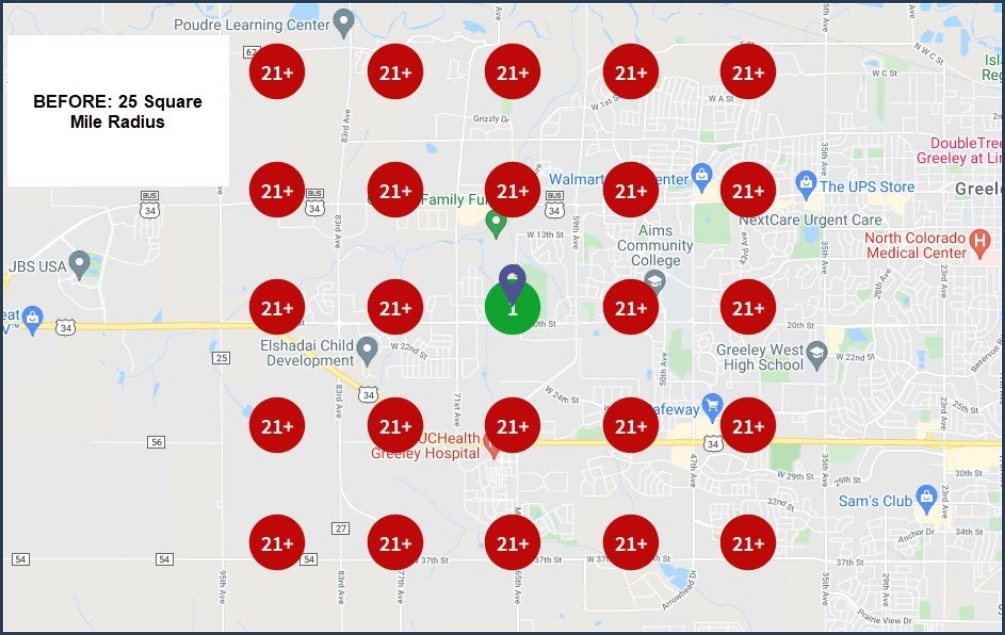
The before represents how our target showed up on Google Maps search results 25 square miles from their location.
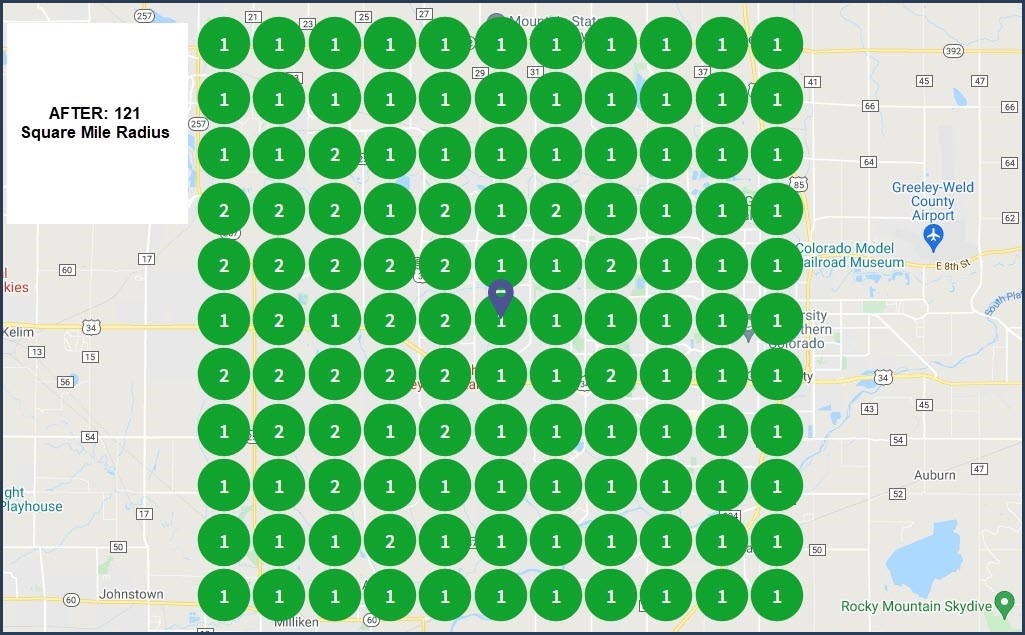
The after represents how our target appears on Google Maps search results within a 121-square-mile radius of their location.
This helped our client triple their leads and volume in just two months:
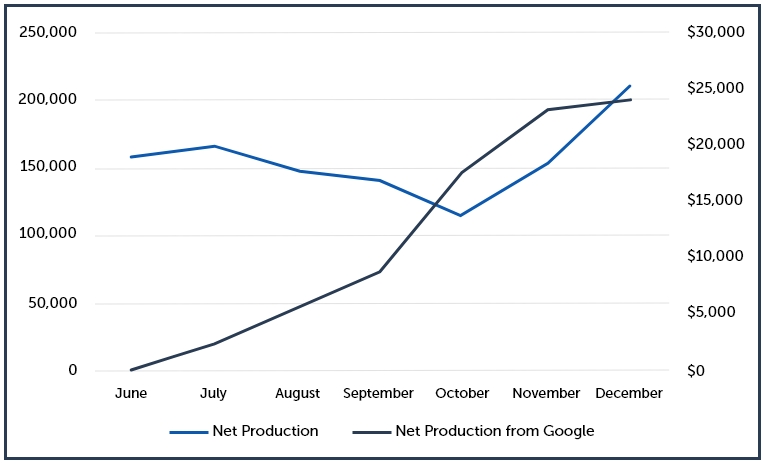

Before we go into how we aligned entities, let’s define them briefly.
Entities are a way for Google to index and categorize various elements that are online, similar to a library’s card catalog.
At their most basic form, entities can be a person, place, or thing (with varied subtleties).
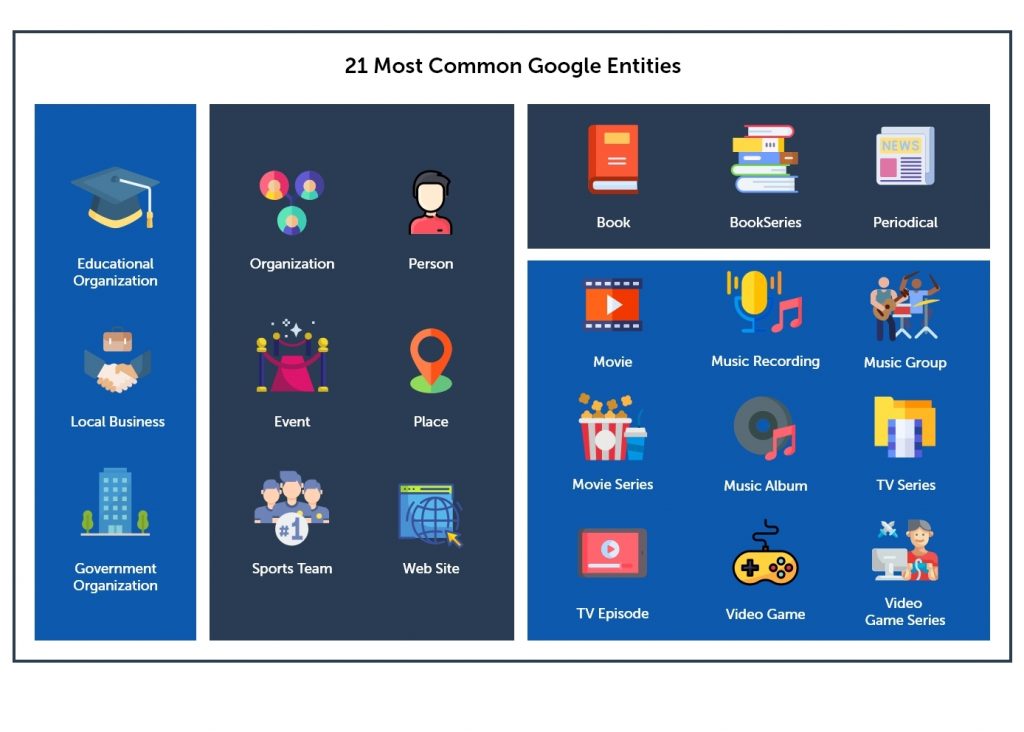 In our approach, we encouraged Google to view our client’s brand entity, its service entities, and its geographical context as interconnected entities.
In our approach, we encouraged Google to view our client’s brand entity, its service entities, and its geographical context as interconnected entities.
We focused on three main areas:
This strategy enhances the website’s content and structure, implements advanced schema markup, and optimizes Google My Business listings to achieve this unified perception.
The website, serving two office locations with a single landing page, was not optimally set up, causing potential confusion for Google.
This was the equivalent of making a parent (Google) choose which kid they love more (the two locations).
We addressed this by creating distinct landing pages for each location, allowing for precise geographical optimization and a direct connection to their respective Google My Business listings.
Aligning a Google My Business listing and the accompanying landing page is a great approach to helping Google understand your entity and how it links to other entities without having to work too hard.
The easier we make Google’s life, the more it rewards us with rankings and traffic.
(Check out our detailed case study of our Google Concierge Strategy for more details on this.)
Initially, the website’s lack of substantial content and absence of a blog signaled Google a lack of authority.
Content is crucial in helping Google understand what your business is about (what you do, what you offer, etc.), as well as the primary way it determines if you are a topical authority in your industry.
To counter this, we developed comprehensive service pages and introduced a blog as a platform for deeper dives into various service aspects, enhancing the site’s topical relevance.
This approach, focusing on natural content creation while paying attention to entity-specific details, significantly boosted the practice’s visibility on Google, transforming its online presence from overlooked to highly regarded.
During this process, it’s important to remember that spelling a word Google doesn’t register could mean the difference between entity recognition and just a regular word.
For example:
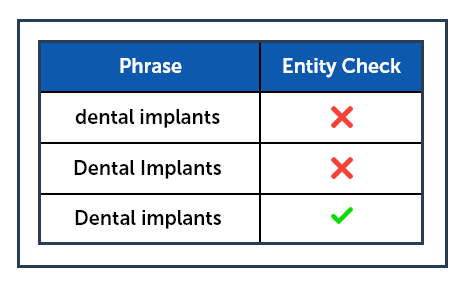
So, establish a list of all relevant entities in your niche and keep it handy so you can incorporate the appropriate versions of them in your content.
Schema markup is basically code that you can put on the pages of your site to help Google quickly identify what that page is about and what it’s related to, etc.
While many website plugins offer basic schema automation, they fall short of capturing the nuanced details essential for aligning a brand with its topical and geographical entities.
To do that, you need to create an advanced schema by hand (or build a custom tool to do it, like we did).
Crafting advanced schema manually allows for more precise alignment.
Utilizing elements like “additionalType” and “areaServed” helps align the brand with topical and geographical entities.
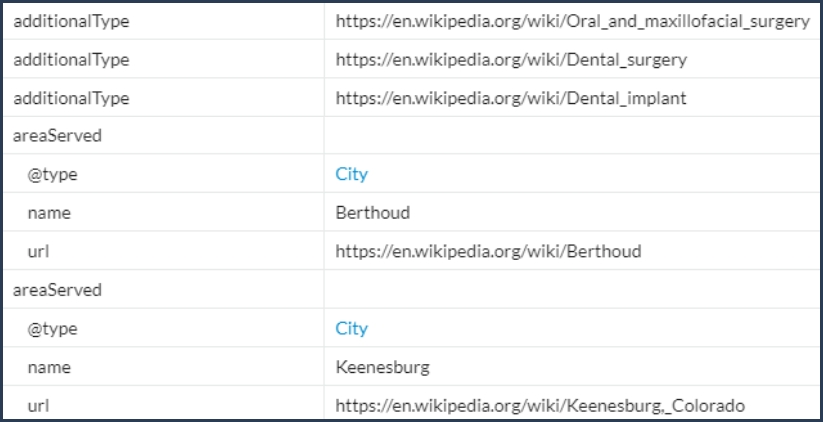
This approach is part of a broader strategy to enhance search visibility.
All you need to do to optimize a Google My Business listing is to take the main concepts from the previous points and incorporate them into the listing.
Ensure your listing includes all relevant categories, especially in your website’s meta titles, H1 tags, or content.
Utilize every content opportunity within the GMB listing, particularly in the products/services sections, emphasizing your main offerings’ entities, like “Dental implants.”
There you go! Hopefully, this has been a helpful resource for you.
Understanding the intricacies of how Google operates opens the door to crafting personalized strategies.
Are you ready to be our next success story?
Please reach out if you are:
Schedule a call with us to explore how our tailored strategies can transform your business.